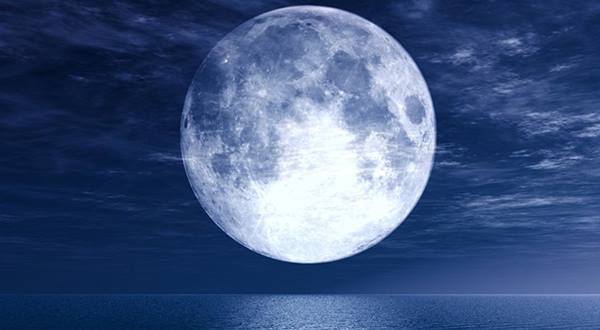The biggest and brightest moon in 68 years is expected to appear in the sky on Monday (14th November, 2016) . Beginning in the evening hours, a phenomenon known as a “supermoon” will take place – a situation in which the moon is full and at its closet point to Earth.
The moon is expected to provide a breathtaking sight, which was last seen in January 1948: The full moon of the middle of the Hebrew (lunar) month of Heshvan will look 14 percent larger than the full moon at its furthest point, and 30 percent brighter.
In order to understand the supermoon, you need to know a little bit about the orbital mechanics of our solar system, specifically how the sun, Earth and moon move.
The distance from Earth to the moon is an average of 384,000 km. However, the moon’s orbit is elliptical — as opposed to circular — and its distance varies by roughly 30,000 km over the course of one month. That means that once a month the moon is at a position known as perigee, its closest to earth, and apogee, its farthest.
Then there’s something called a syzygy — the lining up of celestial bodies, particularly the sun, Earth and moon. When that happens, we get a full moon.
Now, when the syzygy and the perigee coincide, you get the so-called supermoon. This happens on average between four to six times per year.
WHAT IS SUPERMOON?
How the supermoon got its name
While astronomers refer to this phenomenon as a perigee full moon, the term supermoon has gained a foothold in popular culture.
Astrologer Richard Noelle says he coined the term supermoon in a 1979 article he wrote for Horoscope magazine. It described “a new or full moon which occurs with the Moon at or near (within 90 per cent of) its closest approach to Earth in a given orbit.”
The name didn’t get much traction until 2011. However, since then it’s become ubiquitous with the public eagerly anticipating the next supermoon.
What you can expect to see
In 2016, we’ll get a total of three supermoons: one that passed on October 16, the second on Monday and the third on December 16.
But what makes Monday’s supermoon so special is that it’s the closest supermoon since January 26, 1948. It becomes full about two hours before perigee, at which time the moon will be roughly 356,509 kilometres from Earth.
If you want to see the supermoon, it occurs at 8:52 a.m ET. The downside for people on the east coast is that the moon will have set there just after 8 a.m., so they won’t get the complete effect. Those on the west coast will get the full experience, so to speak. Still, the difference in distance will be minimal.
Be warned: you may not actually notice a significant difference between this month’s full moon and any other. While a supermoon can be roughly 14 percent larger and 30 percent brighter, to the casual observer, these differences may not be apparent.
A tip for enjoying the full splendour of the full moon: catch it on the horizon. Due to a trick of the eye, it will appear far larger than when observed directly above.
The next super-close supermoon occurs on November 25, 2034.
















